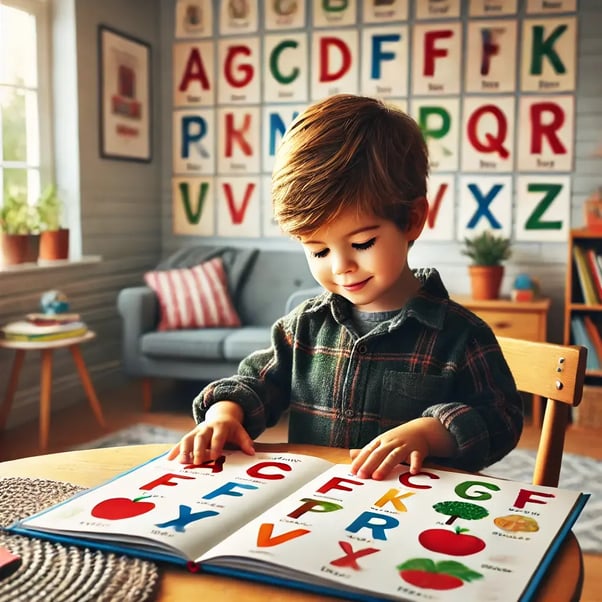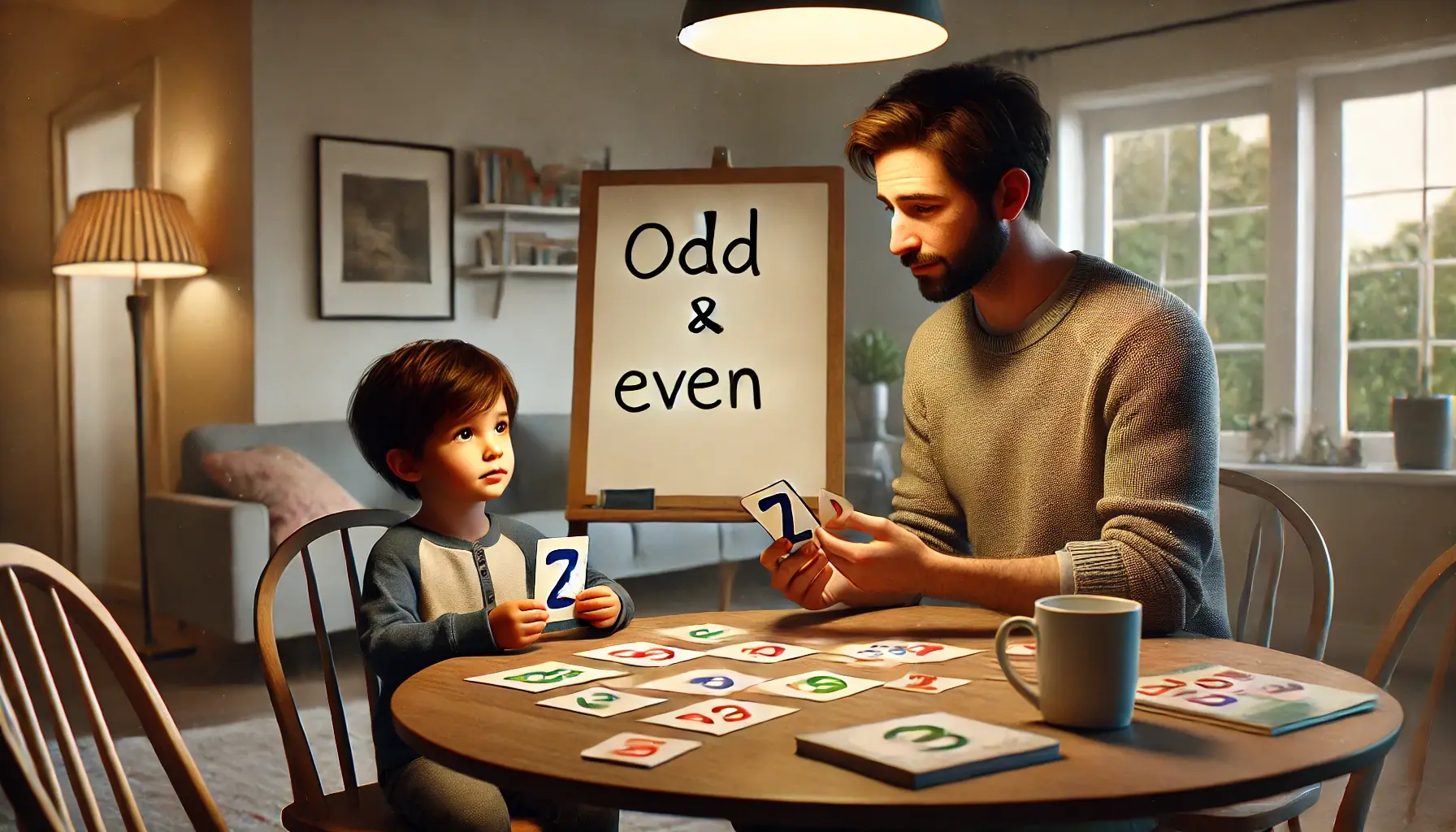
Think of the first moment when your child’s light bulb lit up, as you watched the gears turn and they began to piece together the sounds of their name or yours. In those moments, something incredible is happening: your child is stepping into the world of language through the journey of phonics. This journey may present challenges, but the value of phonics in early literacy is crucial, laying the foundation for your child's ability to read and write. So, what exactly is phonics, and why is it so important?
Understanding Phonics: A Quick Overview for Parents
Phonics is the study of letters or groups of letters and their sounds. It enables us to identify sounds from letters and form words. For instance, when we read "C, A, T," we don't just see letters; we blend them to create the word "CAT." As you can imagine, without phonics, decoding and comprehending would have been impossible. That all being said, there is a significant value to starting phonics practice with your child early on. Starting phonics practice early is essential. Research consistently shows that effective phonics teaching leads to significant advances in reading proficiency. Luckily, teaching phonics can be informal and fun! In this article, we'll explore engaging ways to teach phonics at home.
So we know phonics is the sound a letter makes, and with those sounds, we can formulate words. Without being able to do this, our kids cannot read and write.
Let’s look at an example:
- When we teach our kids that CH makes the “ch” sound.
- The I makes an “i” sound.
- P makes a “Puh” sound.
- They can sound it out phonetically, ch-i-p, to form the word “Chip.”

Tips for Teaching Phonics to Kids
1. Start with Simple Sounds
- Phonetic Sounds: Establish a solid foundation by teaching which letters make which sounds. Once your child grasps that "P" makes the "puh" sound and "F" makes the "fuh" sound, they can begin to manipulate sounds to create words. Teach basic consonant and vowel sounds, focusing on letters like M, B, T, and P, which appear frequently in everyday words. This helps build your child's confidence.
- Letter-Sound Correspondence: Recognize that a letter can produce different sounds based on context. For instance, the letter "A" can sound like "AH" in "cat" and "AYE" in "cake." Understanding the variations of long and short vowel sounds is crucial.
- Blending Sounds: Blending is where the magic happens. D-O-G becomes "dog," and your child is thrilled to see how sounds come together to form words. Blending is often paired with segmenting, where children break down words into individual sounds, like "B-A-T" from "bat."
- Decoding: With a good grasp of phonics, your child can decode words—sounding them out, reading, and spelling them correctly. This is the key to reading fluency and comprehension.
2. Make Learning Phonics Fun
There are many ways that you, as a parent, can make learning engaging and exciting for your child. Incorporating games can be an easy way to keep your child interested in learning. Furthermore, incorporating songs, playful activities, phonics flashcards, and phonics apps creates the same fun effect for your child. When you can keep the learning experience lighthearted and fun, you ignite a natural curiosity in your child.
- Incorporate Games: Games like Phonics Hopscotch and I Spy Phonics make learning interactive. For a game such as Phonics Hopscotch, draw a hopscotch grid with a letter in each square, call out a sound, and your child hops to the correct letter. I Spy Phonics involves identifying objects starting with a specific sound, encouraging kids to connect sounds with their surroundings.
- Songs and Rhymes: Utilize songs and rhymes that emphasize specific sounds. The repetitive nature of music and rhythm can help reinforce phonetic patterns, making learning fun and effective.
3. Read Aloud Daily
Reading aloud with your child enhances their phonics skills. Reading aloud helps you recognize your child’s struggle points and gets your child to read consistently, increasing vocabulary. Try to choose books with repetitive language and rhyming patterns to familiarize them with sounds. Establishing a read-aloud routine can be a bonding experience between you and your child, and it can foster a lifelong love of reading.
4. Use Real-World Examples
Integrate phonics into daily activities. If your child plays with a "ball," use these moments to emphasize the beginning sound, middle sound, and end sound. This method reinforces learning through everyday experiences.
5. Encourage Writing Alongside Reading
Once your child’s scribbles have become identifiable letters, have them start writing simple words (e.g., CAT, DOG, GO, STOP). As they begin writing these simple words, emphasize to them the importance of sounding out the words as they write. Get them in the habit of always sounding out their words so they can spell whatever complex words they face in the future. If your child struggles to do this, don’t be afraid to provide gentle guidance. Remind them what letters make what sounds, and over time, and with much practice, they will get it!
Activities to Reinforce Phonics Learning
- Sound Matching Games: Use pictures or objects to help your child match items with similar beginning sounds. For example, hold up a picture of an apple and an art set for the sound "A" or a ball and a bat for the sound "B."
- Phonics Scavenger Hunt: Create a scavenger hunt where your child finds objects around the house or backyard that begin with a specific sound. This hands-on activity combines creativity with learning.
- Blending Puzzles: Create or use puzzles where your child blends letter sounds to form words. This can increase familiarity with specific sounds and enhance their blending skills.
- Letter-Sound Bingo: A simple Bingo game where you call out sounds, and your child marks the correct letters on their card. It's an easy game to set up at home with some paper and markers.
.png?width=702&height=395&name=Genie%20(1).png)
Phonics Learning Resources for Parents
If you hit a roadblock while teaching phonics, consider additional resources. While many free online tools like Starfall, PBS Kids, and ABCya offer interactive games and educational content, more structured options are also available. For a more advanced approach, Genie Academy provides customized phonics support to meet your child's specific needs.
Here’s how Genie Academy stands out:
- Structured Phonics Programs: Offers online and offline resources, including worksheets, workbooks, and interactive activities.
- Personalized Learning: Customized phonics support that adapts to your child’s learning pace and level.
- Hands-On Learning: Engages children through practical activities like magnetic letters, phonics books, and alphabet games, making learning fun and effective.
- Reading Tutoring Programs: In addition to phonics, Genie Academy offers specialized reading tutoring to enhance your child’s comprehension and fluency (it also offers tutoring in writing, math, and coding).
- Convenient Locations: Genie Academy has several locations, including East Brunswick, Hillsborough, Marlboro, South Brunswick, Plainsboro, and South Plainfield, New Jersey, making it accessible for local families.
- Expert Guidance: Provides access to experienced tutors to support your child’s phonics journey and boost reading confidence.
For parents preferring offline methods, hands-on activities, such as using magnetic letters or reading phonics books, can be combined with Genie Academy’s resources for a well-rounded learning experience.
Common Phonics Challenges and How to Overcome Them
- Struggling with Specific Sounds: Identify which sounds your child struggles with and practice them through repetition and consistency. Frequent lessons are often more effective than longer sessions for younger children. Use interactive activities to maintain interest and engagement.
- Lack of Interest: Combat disinterest by aligning phonics lessons with your child's favorite characters or stories. Making learning relevant to their interests can be a game-changer in keeping them motivated: if your child has a newfound interest in sharks, find a book about sharks to entice them.
- Patience and Support: Be patient and supportive as every child learns independently. Celebrate even small victories to boost your child’s confidence. Encourage them to embrace mistakes as part of the learning process. Your encouragement fuels their desire to learn and overcome challenges.
Conclusion
Phonics is all around us, embedded in everyday life. From grocery shopping to time at the park, each moment holds potential learning opportunities. Encouraging your child to name objects and emphasize beginning sounds turns real-world interactions into fun learning experiences.
As your child progresses from reading to writing, encourage them to practice writing letters and simple words. Remind them to sound out the words as they write to instill good spelling habits. If they struggle, gentle guidance will help them master these skills.
Just be patient with yourself and your child, as learning is a journey. Celebrate progress, no matter how small, and encourage your child to strive for improvement. Together, you can build a strong foundation for lifelong reading success. Good luck, parents—you can do this! And remember, Genie Academy is here to help discover the genius in your child.





